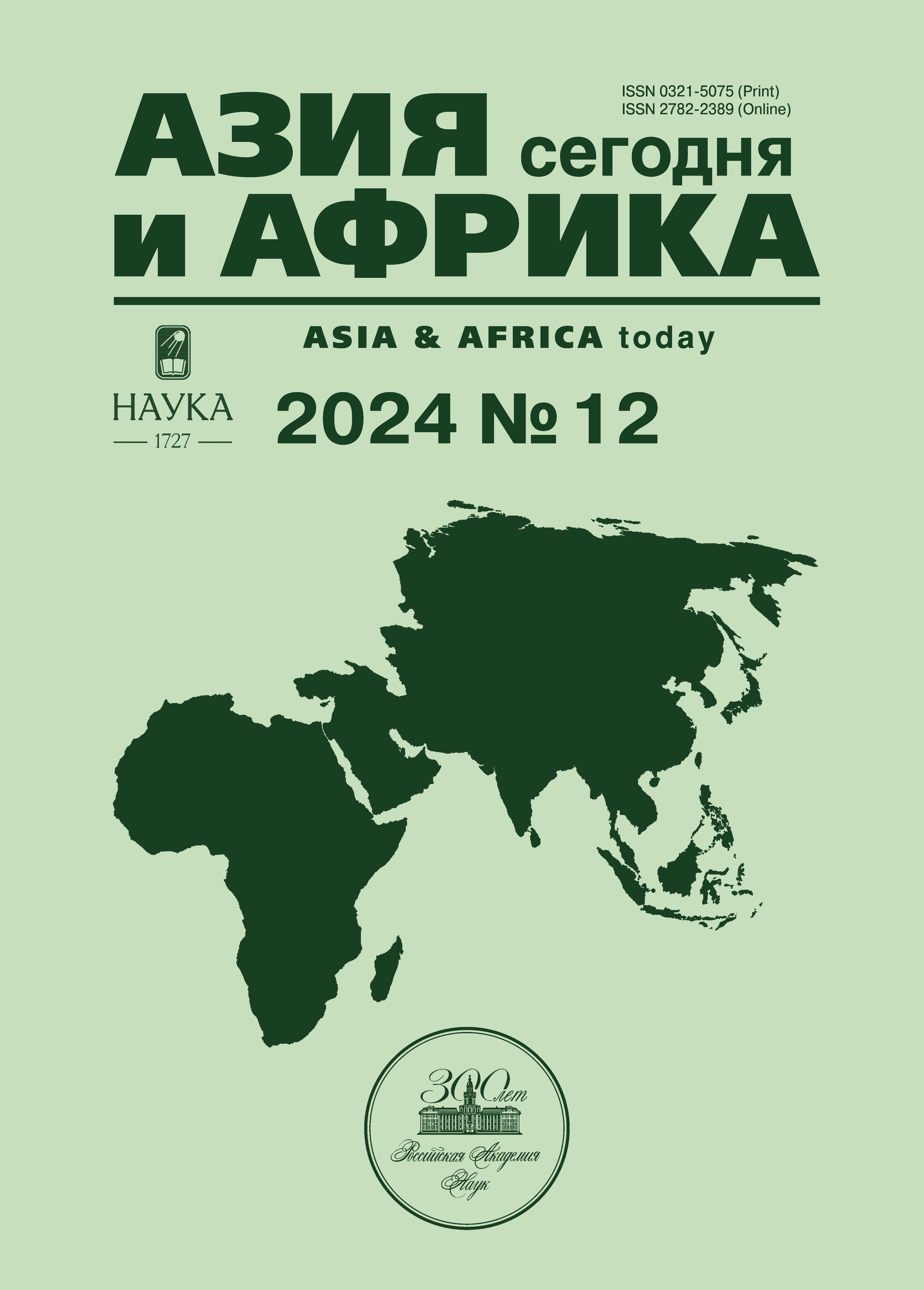The “Water Problem” in the Congo River Basin
- Авторлар: Denisova T.S1, Kostelyanets S.V1
-
Мекемелер:
- Institute for African Studies, Russian Academy of Sciences
- Шығарылым: № 12 (2024)
- Беттер: 49-57
- Бөлім: Politics, economics
- URL: https://ter-arkhiv.ru/0321-5075/article/view/647474
- DOI: https://doi.org/10.31857/S0321507524120068
- ID: 647474
Дәйексөз келтіру
Аннотация
Throughout the period of independent development of African nations, the peoples inhabiting them have been experiencing recurring political and socio-economic cataclysms, among which the problem of water scarcity has been gaining in prominence in recent decades. Despite the fact that Africa, especially the Congo River basin, possesses abundant water resources including full-flowing rivers, lakes, wetlands and groundwater, due to the lack of proper management and the shortage of qualified personnel and funds to develop adequate water intake and distribution infrastructure, the issue of providing the population with drinking water has become a major issue in almost all countries of the continent, including the Democratic Republic of the Congo, 98% of whose territory is located in this basin, which ranks second in the world in terms of the volume of discharge after the Amazon. The present article provides a description of the hydrological features of the Congo River basin and discusses the causes of the water shortages observed in the DRC, which have a negative impact on the development of not only the country’s economy and the provision of public services, but also on the health of the population. It is also noted that, unlike other regions of the continent, in the Congo basin there are no conflicts over access to water resources between the riparian states and, moreover, there is a permanent consensus among them on the issues of water use and recognition of the leading role of the DRC in their resolution.
Авторлар туралы
T. Denisova
Institute for African Studies, Russian Academy of Sciences
Email: tsden@hotmail.com
ORCID iD: 0000-0001-6321-3503
PhD (History), Leading Researcher, Head Moscow, Russia
S. Kostelyanets
Institute for African Studies, Russian Academy of Sciences
Email: sergey.kostelyanyets@gmail.com
ORCID iD: 0000-0002-9983-9994
PhD (Political Science), Leading Researcher, Head Moscow, Russia
Әдебиет тізімі
- Peña-Ramos J.A., López-Bedmar R.J., Sastre F.J., Martínez-Martínez A. 2022. Water Conflicts in Sub-Saharan Africa. Frontiers in Environmental Science. № 10. Pp. 1–18. doi: 10.3389/fenvs.2022.863903
- Tourian M.J., Papa F., Elmi O., Sneeuw N., Kitambo B., Tshimanga R.M., Paris A., Calmant S. 2023. Current availability and distribution of Congo Basin’s freshwater resources. Communications Earth & Environment. № 4 (1). Article 174. Pp. 1–13. doi: 10.1038/s43247-023-00836-z
- von Lossow T. 2017. The River Congo – Africa’s Sleeping Giant. Regional Integration and Intersectoral Conflicts in the Congo Basin. Stiftung Wissenschaft und Politik. https://www.clingendael.org/sites/default/files/2017-11/The_River_Congo_Africas_Sleeping_Giant.pdf (accessed 14.09.2024)
- Kabemba N.F. 2012. The issue of access to clean water in The Democratic Republic of Congo. Bulletin of the ISI 58th World Statistics Congress of the International Statistical Institute, 2011. The Hague: International Statistical Institute. Pp. 6847–6852. https://2011.isiproceedings.org/papers/950967.pdf
- Aloysius N., Saiers J. 2017. Simulated hydrologic response to projected changes in precipitation and temperature in the Congo River basin. Hydrology and Earth System Sciences. № 21 (8). Pp. 4115–4130. doi: 10.5194/hess-21-4115-2017
- Denisova T.S., Kostelyanets S.V. 2024. The Lake Chad Basin: A Territory of Instability. Asia and Africa today. № 1. Pp. 33–41. (In Russ.). doi: 10.31857/S032150750029645-1
- Vichi M. 2011. Transferring Water from the Congo to Lake Chad: The Transaqua project. Executive Intelligence Review. № 38. Pp. 31–36. https://larouchepub.com/eiw/public/2011/eirv38n28-20110722/31-36_3828.pdf (accessed 14.09.2024)
- Tesfaye B. 2022. Climate change and conflict in the Sahel. Discussion Paper Series on Managing Global Disorder № 11. Council on Foreign Relations. https://cdn.cfr.org/sites/default/files/report_pdf/Climate%20Change%20and%20Conflict%20in%20the%20Sahel.pdf (accessed 14.09.2024)
- Hughes D.A., Tshimanga R.M., Tirivarombo S., Tanner J. 2014. Simulating wetland impacts on stream flow in southern Africa using a monthly hydrological model. Hydrological Processes. № 28. Pp. 1775–1786. doi: 10.1002/hyp.9725
- Atibu E.K., Lacroix P., Sivalingam P., Ray N., Giuliani G., Mulaji C.K., Otamonga J.-P., Mpiana P.T., Slaveykova V.I., Pote J. 2018. High contamination in the areas surrounding abandoned mines and mining activities: An impact assessment of the Dilala, Luilu and Mpingiri Rivers, Democratic Republic of the Congo. Chemosphere. № 191. Pp. 1008–1020. doi: 10.1016/j.chemosphere.2017.10.052
- Vinokurov, E., Akhunbaev, A., Usmanov, N., Tsukarev T., Sarsembekov T. Investments in the water and energy complex of Central Asia. Reports and working papers 21/3. Almaty, Moscow: Eurasian Development Bank, 2021. (In Russ.). https://eabr.org/upload/iblock/185/EDB_WEC_CA_Report_RU_web.cleaned.pdf (accessed 14.09.2024)
- Matveeva N.F. 2024. Forestry in the Congo Basin Countries and Measures to Improve its Efficiency. Journal of the Institute for African Studies. № 1 (66). Pp. 80–92. (In Russ.). doi: 10.31132/2412-5717-2024-66-1-80-92
- Pare S., Bonzi-Coulibaly Y. 2013. Water quality issues in West and Central Africa: present status and future challenges. Understanding Freshwater Quality Problems in a Changing World. Gothenburg (Sweden): IAHS-IAPSOIASPEI Assembly. Pp. 87–95. https://iahs.info/uploads/dms/15573.14-87-95-361-24-H04-Pare-Bonzi_April_2013CORR.pdf
Қосымша файлдар









